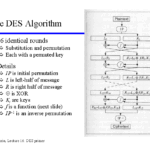In the digital age, cryptographic security stands as the cornerstone of ensuring that our data remains confidential and untampered. Yet, as technology advances at an unprecedented pace, several notable gaps in cryptographic security have emerged. These lacunae not only expose sensitive information but also challenge the credibility of cryptographic mechanisms themselves. This article will explore the multifaceted vulnerabilities that plague cryptographic security today, drawing attention to the underlying factors that contribute to these issues.
One glaring observation is the prevalence of legacy systems within an increasingly interconnected ecosystem. Many organizations rely on antiquated cryptographic algorithms, which, while historically robust, no longer withstand contemporary threats. The use of outdated protocols like SHA-1, for instance, can lead to catastrophic breaches, as these algorithms have been compromised through advances in computational power and analytical techniques. As cryptographic standards evolve, it becomes imperative for institutions to upgrade their systems to safeguard against sophisticated attacks.
In tandem with the reliance on outdated algorithms is the issue of algorithmic complacency. Developers often assume that once a cryptographic solution is deployed, it can be trusted indefinitely. However, the paradigm of cryptography is dynamic; threats evolve, and so must the corresponding security measures. The phenomenon of ‘security through obscurity’ also plays a role in this complacency. Organizations may mistakenly believe that their proprietary adjustments to existing algorithms provide adequate protection, when in reality, many are merely obscuring underlying vulnerabilities.
Another significant gap lies in the realm of key management. The sanctity of cryptographic systems heavily depends on the secure generation, distribution, and storage of keys. Yet, organizations frequently fall prey to inadequate key management practices. For example, hardcoding secrets within applications, storing them in plaintext, or failing to rotate keys regularly introduces vulnerabilities that can be readily exploited by attackers. Consequently, securing the cryptographic keys has become a paramount challenge in fortifying security protocols.
Additionally, human factors cannot be overlooked when analyzing the gaps in cryptographic security. The complexity of cryptographic systems often leads to user errors, whether due to misunderstanding or neglect. Insufficient training for personnel responsible for implementing cryptographic solutions can give rise to critical mistakes. Moreover, the interplay between psychological factors and cybersecurity reveals a troubling trend: users may take shortcuts or neglect best practices due to the perceived burden of complexity. This is evident in frequent incidents of phishing attacks, where human gullibility undermines even the most sophisticated cryptographic practices.
Furthermore, the rapid proliferation of quantum computing poses a significant threat to traditional cryptographic mechanisms. It is widely accepted that classical cryptographic algorithms—especially those based on the hardness of factorization and discrete logarithm problems—will succumb to the computational prowess of quantum algorithms like Shor’s algorithm. This impending reality underscores the urgency for post-quantum cryptography, yet many organizations remain blissfully unaware or underprepared for such a paradigm shift.
The asymmetry in cryptographic knowledge across various sectors adds another layer of complexity. While industries such as finance and healthcare are investing heavily in advanced cryptographic solutions, smaller enterprises often lag behind. This disparity creates a fragmented landscape where robust security in one sector does not necessarily translate to broader protection. As a result, attackers may target less-resilient systems within smaller organizations, potentially leveraging them as entry points to access larger networks through interconnected digital infrastructures.
Moreover, the rise of Internet of Things (IoT) devices introduces additional vulnerabilities to the cryptographic matrix. Many IoT devices employ minimal processing power, rendering them incapable of supporting sophisticated cryptographic algorithms. Consequently, these devices often utilize weak or outdated protocols, which can serve as gateways for cybercriminals. The sheer volume of IoT devices, combined with inadequate security measures, presents a daunting challenge for cryptographic security.
In the sphere of policy and regulation, ambiguities often exacerbate vulnerabilities in cryptographic systems. The lack of standardized protocols and guidelines for implementing cryptography across industries leads to inconsistent practices. While some governments advocate for the use of strong encryption to protect citizen data, others push for backdoor access for law enforcement. These conflicting approaches create uncertainty, further complicating the landscape of cryptographic security.
As we delve deeper into the intricacies of cryptographic security, it becomes clear that gaps are not merely isolated issues but rather symptoms of broader systemic problems. These include the interplay between technological evolution and human behavior, the inadequacy of current practices, and the legislative environment. The pursuit of overcoming these challenges necessitates a concerted effort from all stakeholders—companies, governments, and individuals alike—to foster a culture of security awareness and diligence.
In conclusion, the gaps in cryptographic security today illuminate the compelling need for continuous innovation, rigorous education, and proactive policy-making. By recognizing and addressing these vulnerabilities, we can fortify our digital infrastructures against an increasingly sophisticated array of threats. A proactive approach to cryptographic security will not only enhance trust in digital systems but also ensure that we are prepared to face the uncertainties of tomorrow’s technological landscape.









Leave a Comment